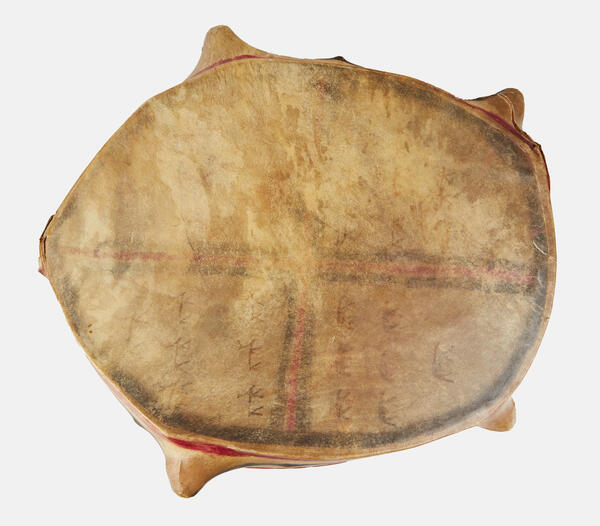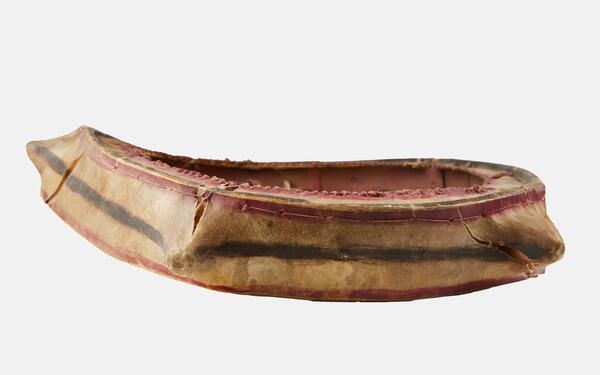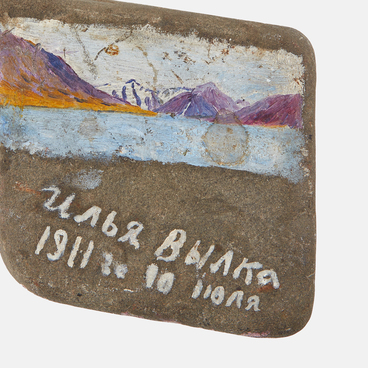The ethnographic collection of the Rusanov House Museum contains a shaman drum — the essential tool in shamanic rituals, a faithful companion of the priest on his journeys between the worlds of the living and the dead.
A shaman drum is not just a ritual instrument, but an assistant, an object endowed with a spirit, a winged horse fed with araka (milk vodka) and milk. The drumbeat helps to travel in time and reach the Lower and Upper worlds through the layers of reality. According to traditional beliefs, the drum has its own life energy, helps the shaman to do meditations, enter a trance state and create the same experience for the others.
Only strong shamans have drums, and there should be only one working drum at a time, no more than nine of them in the life of a priest, otherwise the owner will leave the world of the living. A drum has a frame, a round, oval, or pear-shaped rim, which is covered with leather. Special wood is used. Different peoples of the North have their own traditions of searching for ideal material. Some are helped to find the right tree by spirits, while others believe that the ideal tree is the one struck by a lightning or a storm. To choose the perfect tree, some people go to the forest with an ax, close their eyes and select it at random.
Inside the drum there is a handle and rods with all kinds of ritual pendants, tubes, figurines, and rings attached. They are believed to increase the strength and spiritual power of the drum. It is customary for some nationalities to decorate the drum with drawings.
A beater is another important element of the drum. Traditionally, it is cut out of birch or cedar, covered with fur or a finely dressed hide. Small bells and rings are often attached to the ritual object — they make a ringing sound during rhythmic drumming. The beater is also involved in various rituals, used for divination and other purposes.
After making the drum, the shaman proceeded to a
special rite of resurrection. Each nation and each settlement have their own
ritual, a method that has been developed over the centuries. Often it all
starts with the shaman feeding his new tambourine with milk, bread, honey, and
butter. He fumigates it with tobacco smoke or grass. Then he conducts a ritual,
during which the souls of trees and animals, which have provided the material
for the drum, enter the instrument. After that, the shaman tells the tambourine
about his life and makes a vow to serve living people, as well as the spirits
that are stuck between worlds and need help to get to the world of the dead.





